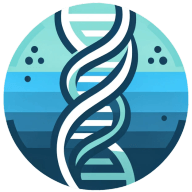7 Ways Dna Sequencing Advances Understanding of Neurodevelopmental Disorders
Unlock the secrets of neurodevelopmental disorders with cutting-edge DNA sequencing techniques, as detailed by leading experts in the field. This article delves into the groundbreaking discoveries that link genetic mutations to the mysteries of brain development. Readers will gain an in-depth understanding of how these advances not only decode the complexities of neurodevelopmental disorders but also pave the way for innovative treatments.
- Identify Genetic Mutations Linked to NDDs
- Pinpoint Gene Variants in NDDs
- Reveal Gene Expression Patterns
- Uncover Epigenetic Modifications in NDDs
- Examine Gene-Environment Interactions
- Enable Early Diagnosis and Intervention
- Develop Targeted Gene Therapies
Identify Genetic Mutations Linked to NDDs
One of the ways DNA sequencing is being used to study neurodevelopmental disorders (NDDs) is through whole-exome sequencing (WES) and whole-genome sequencing (WGS) to identify genetic mutations linked to conditions like autism spectrum disorder (ASD), ADHD, and intellectual disabilities. WES has been used in research to detect rare de novo (new) mutations in genes such as SHANK3, SCN2A, and CHD8, which are important in synaptic function and brain development. This has advanced our knowledge of how genes play a role in brain connectivity, cognition, and behavior in ASD. Impact on Understanding and Treatment: Knowing genetic risk factors provides an understanding of the distinction of subtypes of NDDs; this way, interventions can be more personalized. - Genetic information helps early detection so that earlier behavioral and therapeutic support may be provided. - Ongoing research will continue to analyze how a gene-environment interaction plays a role in NDD, influencing future prevention and intervention research.

Pinpoint Gene Variants in NDDs
One way that DNA sequencing is being used to study neurodevelopmental disorders is through the identification of genetic mutations and variants associated with conditions like autism spectrum disorder (ASD), intellectual disabilities, and other neurodevelopmental conditions. By sequencing the DNA of individuals with these disorders, researchers can pinpoint specific genes or gene mutations that may contribute to the development of these conditions.
For example, in research on autism spectrum disorder (ASD), whole-genome sequencing has helped identify mutations in genes related to brain development and synaptic functioning. A study found that certain mutations in the CNTNAP2 gene, which plays a role in neural connectivity, were linked to language impairments and social challenges in children with ASD. This discovery has opened doors for targeted therapies and early interventions that aim to address specific neurological pathways impacted by these mutations.
By understanding the genetic underpinnings of neurodevelopmental disorders, DNA sequencing is improving our ability to diagnose these conditions more accurately, predict their progression, and eventually tailor more effective treatments and support strategies for individuals affected by them.

Reveal Gene Expression Patterns
DNA sequencing advances the understanding of neurodevelopmental disorders by revealing gene expression patterns during brain development. By examining how genes are turned on and off over time, researchers can better understand how the brain forms and functions. This information is crucial for identifying the root causes of neurodevelopmental disorders, which often begin early in life.
By understanding these patterns, scientists can identify critical periods in brain development and target interventions more effectively. This knowledge can ultimately lead to better treatments and outcomes for individuals with these disorders. Explore how gene expression patterns impact brain development to support further advancements in the field.
Uncover Epigenetic Modifications in NDDs
DNA sequencing plays a pivotal role in uncovering epigenetic modifications that influence gene function in neurodevelopmental disorders. These modifications can change how genes are expressed without altering the underlying genetic code. By studying these changes, researchers can gain insights into how environmental factors, such as stress or toxins, impact gene function and contribute to the development of these disorders.
Understanding epigenetic modifications can help identify new targets for treatment and prevention. By focusing on these modifications, scientists can develop more personalized approaches to therapy. Support research into epigenetic modifications to help improve outcomes for those affected by neurodevelopmental disorders.
Examine Gene-Environment Interactions
The study of gene-environment interactions in neurodevelopmental disorders is greatly enhanced by DNA sequencing. This technology allows scientists to examine how genetic predispositions interact with environmental factors to influence brain development. By understanding these complex interactions, researchers can identify risk factors and protective factors that contribute to the onset and progression of neurodevelopmental disorders.
This knowledge is essential for developing strategies to prevent or mitigate these conditions. By examining these interactions, scientists can develop more effective public health interventions. Advocate for more research on gene-environment interactions to help reduce the prevalence of neurodevelopmental disorders.
Enable Early Diagnosis and Intervention
Early diagnosis and intervention strategies for neurodevelopmental disorders are made possible through advances in DNA sequencing. Early identification of genetic markers associated with these disorders can allow for timely interventions that can improve long-term outcomes. By identifying these markers, healthcare providers can develop personalized treatment plans that address the unique needs of each individual.
Early intervention is crucial for maximizing the potential for positive outcomes and reducing the impact of these disorders on individuals and their families. By focusing on early diagnosis, we can improve the quality of life for those affected by these conditions. Promote the importance of early screening and intervention to help those with neurodevelopmental disorders.
Develop Targeted Gene Therapies
The development of targeted gene therapies for neurodevelopmental disorders is facilitated by advancements in DNA sequencing. By understanding the specific genetic mutations that contribute to these conditions, scientists can develop therapies that target the root cause of the disorder. These targeted therapies have the potential to be more effective and have fewer side effects than traditional treatments.
By focusing on the underlying genetic cause, researchers can develop more precise and personalized treatments. This approach holds promise for improving the quality of life for individuals with neurodevelopmental disorders. Encourage support for research into targeted gene therapies to help find new treatments for these conditions.

